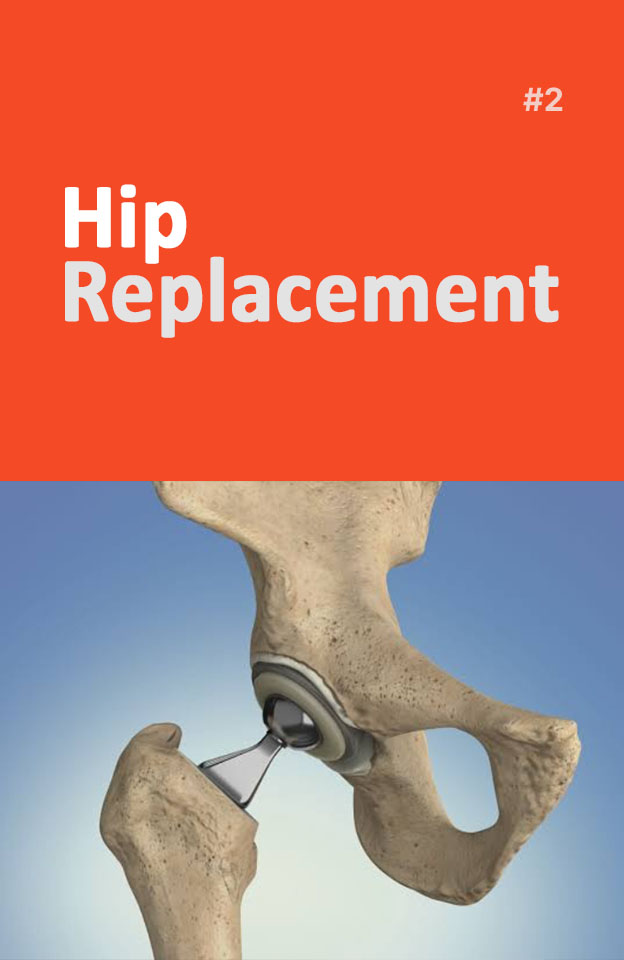Hip Replacement

Hip Replacement
The hip is one of the body’s most important joints. It plays an important role in nearly every basic function, from sitting and standing to walking and bending. Most people are born with healthy hip joints that facilitate a wide motion range without pain or discomfort. But over time, one or both hips can develop complications that stiffen the joints and cause significant discomfort on a day to day basis. Rather than cope with more physical limitations, discomfort, and a less active lifestyle, many patients turn to hip replacement surgery as a definitive solution to their problem. Today’s minimally invasive hip replacement procedures make it possible for patients to achieve restored joint function with as little inconvenience as possible.

Why might I need hip replacement surgery?
Hip replacement surgery is a treatment for pain and disability in the hip. Osteoarthritis is the most common reason for hip replacement surgery.Osteoarthritis causes loss of joint cartilage in the hip. Damage to the cartilage and bones limits movement and may cause pain. People with severe pain from a degenerative joint disease may not be able to do normal activities that involve bending at the hip. These activities include walking and sitting.
Other forms of arthritis such as rheumatoid arthritis and arthritis that results from a hip injury can also damage the hip joint.Hip replacement may also be used to treat certain hip fractures. A fracture is an injury often from a fall. Pain from a fracture is severe. Walking or even moving the leg causes pain.
If other medical treatments don’t control your arthritis pain, your healthcare provider may recommend a hip replacement
What happens during hip replacement surgery?
Hip replacement usually requires a stay in a hospital. Which normally lasts 5 days
surgery is done while you are asleep undergeneral anesthesia or sedated under spinal anesthesia. Your anesthesiologist will discuss this with you before the surgery.
Generally, hip replacement surgery follows this process:
Your surgeon will make an incision in the hip area,hewill then remove the damaged parts of the hip joint and replace them with the prosthesis.

The hip prosthesis is made up of a stem that goes into the thighbone (femur), the head joint (ball) that fits into the stem, and a cup that is inserted into the socket of the hip joint. The stem and cup are made of metal. The ball may be made of metal or ceramic. The cup has a liner that may be made of plastic or ceramic.


The 2 most common types of artificial hip prostheses used are cemented prostheses and uncemented prostheses. A cemented prosthesis attaches to the bone with surgical cement. An uncemented prosthesis attaches to the bone with a porous surface. The bone grows onto this surface to attach to the prosthesis. Sometimes a combination of the 2 types is used to replace a hip.
Your surgeon will decide which type to go with based on various criteria and parameters.

The incision will be closed with stitches or surgical staples.A drain may be placed in the incision site to remove the fluid.A sterile bandage or dressing will be put on the site.
What happens after hip replacement surgery?
In the hospital
Hip replacement surgery usually requires you to stay in the hospital for 4- 5 days days.
It is important to begin moving the new joint after surgery. A physical therapist will meet with you soon after your surgery and plan an exercise rehabilitation program for you. Your pain will be controlled with medicine so that you can participate in the exercise. You will be given an exercise plan to follow both in the hospital and after discharge.
You will be discharged home or to a rehabilitation center. In either case, your healthcare provider will arrange for continuation of physical therapy until you regain muscle strength and good range of motion.
I feel “clicking” inside the hip, is this normal?
The clicking is a result of the soft tissues moving across around the hip, or the artificial parts coming into contact with one another. This sensation usually diminishes as your muscles get stronger.
I am experiencing a lot of swelling, is this normal?
Fluid can accumulate in the legs due to the effect of gravity. It is not unusual that you didn’t have it in the hospital, but it got worse when you went home (because you are doing more!) To combat this, you should elevate your legs at night by lying on your back and placing pillows under the legs so that they are above your heart. There are also TEDS stocking (the white stockings from the hospital) that you can put on during the day – have someone help you on with them in the morning, use them during the day, and then take them off at night. If you did not get the TEDS from the hospital, you can purchase knee high, medium (15-20 mm Hg) compression surgical stockings at most drug stores.
When can I travel
If you are traveling by car, you should be sure to take frequent breaks so that you don’t feel too stiff when getting up. On an airplane, I like you to wear compression stockings (if within 1-month postop), and take a couple of walks during the flight. Having an aisle or front row seat will help you get more space.
